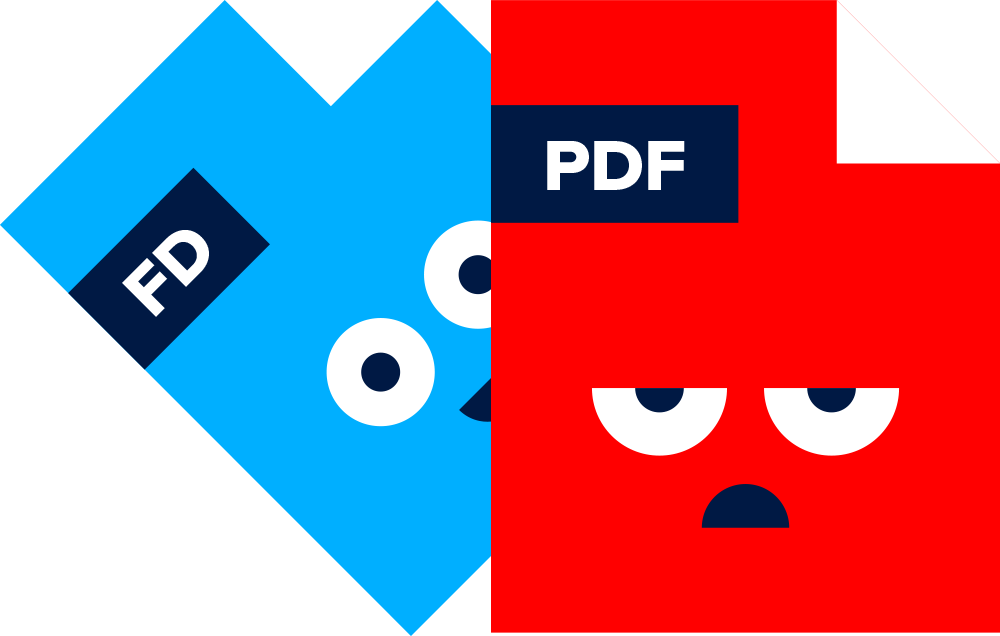Introduction
Creating digital content: where to start? It's a question that echoes across every marketing team, sales department, and HR office. One thing is for sure: if you're not creating digital content today, you're missing out. The digital world is where your audience lives, breathes, and consumes information. Social media, engaging videos, interactive websites — you must create content that thrives in this digital landscape.
The real question is, what kind of digital content should you be creating? Good question!
The Content Conundrum: What to Create?
Dr. Jillian Ney, a leading light in digital behavioral psychology, perfectly captures the current content landscape:
"The ongoing war for attention has bred a generation of skimmers and consumers with content-blindness. We aim to cut through the noise with content that's different."
This quote resonates deeply, highlighting the struggle to stand out in today's information overload. But with the right digital content type, you might find a way to cut through the noise.
The challenge is that the content needs of a marketing campaign differ from those of an employee onboarding program. So, how do you navigate this vast sea of possibilities and choose the right content format to resonate with your audience?
Another good question!
We've developed a free solution to guide you through this digital content odyssey: The Content Compass.
Kind of like your personal map, this compass helps you identify the perfect content type for any situation. It doesn't matter if you're in Marketing, Sales, Human Resources, or Corporate Communications (or anything else) — the Content Compass covers a wide range of departments and their specific content needs.
The Compass dives deep into thirteen distinct use cases across four key departments:
Marketing: brand marketing, demand generation, and customer engagement, everything you need to create the strongest marketing strategy.
Sales: empower your sales team with buyer and partner enablement tools and fundraising support.
Human Resources: streamline onboarding processes with engaging materials and build a strong company culture through effective employee communication.
Corporate Communications: foster clear communication with stakeholders and cultivate a thriving online community.
And this is just the tip of the iceberg. Let's have a look at what digital content you can start creating now according to your needs.
Step one: Identify your digital content needs
With so many digital content types fighting for attention and audiences bombarded with information, how do you cut through the noise and choose the right format to make an impact?
First, you need to understand your audience's needs. Sending a dense white paper to job candidates will not win you any fans—it's about choosing the right format for the right situation.
Ask yourself, "Why?":
Start by clearly defining the goal you want to achieve with your content. Are you aiming to:
- Generate more leads? Attract new customers and build interest in your offerings.
- Educate your audience? Provide valuable information and empower them to make informed decisions.
- Boost brand awareness? Spread the word about your company and establish your brand as an industry leader.
- Nurture existing relationships? Foster stronger connections with clients or team members.
Who's your target audience?
Understanding your target audience is crucial. Consider:
- Demographics: Who are you trying to reach? Age, location, and interests all play a role in content preferences. Many social media platforms and marketing tools offer audience insights features that can reveal demographic breakdowns of your followers or website visitors.
- Online habits: Where does your audience consume information? Social media platforms, industry blogs, or your company website? Conduct social media listening or analyze website search queries to glean insights into your audience's interests. Look for trends in keywords and topics they engage with online.
- Content preferences: What kind of content resonates most with your audience? Do they prefer short videos, in-depth articles, or interactive quizzes?
The best way to gather all this information is to conduct a quick audience survey or research existing customer data to gain valuable insights into their preferences. If you're only getting started, have a look at your competitors' audience and customers.
Where does your audience spend time online?
Discovering where your audience consumes information is key to choosing the right digital content format. Here are some strategies to shed light on their digital habits:
- Website Analytics: dive into your website analytics platform (e.g., Google Analytics) to see which referral sources drive traffic to your site. This can indicate where your audience might engage with content before arriving at your domain.
- Social Listening Tools: use social listening tools to track online conversations relevant to your industry or brand. This can reveal the social media platforms where your target audience is most active and the type of content they engage with.
Set up alerts for keywords or hashtags related to your niche. This will allow you to monitor conversations happening in real-time and see what kind of content sparks engagement within your target audience.
- Surveys and Focus Groups: don't underestimate the power of directly asking your audience. Conduct surveys or host focus groups to gain insights into their preferred content formats and where they consume information online.
Align content type with your goal
Once you've identified your "why" and "who," you can start brainstorming. The Content Compass offers a great deal of content-type suggestions for various goals.
For example, if you aim to generate leads, consider creating engaging reports or interactive ebooks. If your goal is to educate your audience, explore options like video tutorials or detailed blog posts.
Browse the Content Compass by use case to discover specific content types aligned with your goals. And if you feel like your use case isn't there, we're always interested, so feel free to drop us a line!
Step two: Find your use case and the content types that fit within
The Content Compass can be your roadmap to achieving your specific content goals. Here's how to use it to identify your perfect use case:
- What's your department? While the Compass offers many use cases, consider which department aligns with your current content objectives. Are you aiming to generate leads for the Marketing team, educate customers, or build stronger internal communication within Human Resources?
- What's your goal? Once you've identified the relevant department, dive deeper! The Compass provides a breakdown of use cases within each department. Is your goal to nurture existing customer relationships or attract new ones entirely? Perhaps you need content to onboard new hires or boost brand awareness within your industry.
Let's have a look at what your use cases are and which content types fit best for your needs, shall we?
Now that you've identified your department and content goal let's explore how the Compass helps you choose the right format:
Creating digital content for marketing
Building brand awareness:
Building brand awareness can feel daunting in a crowded marketplace. How do you establish yourself as a thought leader and stand out from the competition?
Here are a few content types you can explore to establish your brand as top-of-mind:
Whitepapers: Showcase your expertise and industry knowledge with in-depth reports that position you as a trusted resource. Here's a great example of a white paper by Knight Frank that sets the brand as a true expert in their field.
Industry reports: Leverage data and insights to provide valuable industry trends and solidify your brand's authority within your niche. Dentsu is a perfect example of a brand that created a digital report to increase brand awareness. Have a look at their amazing trend report.
Inspiration magazines: Spark creativity and brand recognition with a visually captivating online magazine that showcases your brand personality and unique value proposition. At Foleon, we've created an inspirational magazine that shows all the amazing content that's being created with our platform.
Strengthening customer relationships:
For long-term success, you need to nurture strong customer relationships and engagement. There are a couple of content types to help you tackle this:
Company Brochures: Provide a comprehensive overview of your company, products, and services, reminding customers why they chose you. This will also allow you to increase visibility on your offering and potentially run upsells.
Inspiration magazines: offer valuable content that keeps your brand top-of-mind, showcasing your expertise and commitment to customer success. Nestle created this beautiful inspirational magazine that serves both their existing customers and drives brand awareness.
Resource hubs: create a centralized repository of helpful guides, tutorials, and other resources that empower your customers and demonstrate your dedication to their needs via an online content hub. The European Investment Fund created this great resource center to gather all their content in one place.
Generating demand for products:
Generating product demand is a key marketing objective. How do you convert website visitors into leads and drive sales?
Here are what digital content types you can explore:
Whitepapers: Educate potential customers about your product's features, benefits, and industry applications, establishing value and credibility. We particularly love this beautiful white paper created by Knight Frank; it makes the reader dream big through pages of incredibly designed content.
Product brochures: Offer a clear and concise overview of your product's functionalities and competitive advantages, driving purchase decisions. This brochure by Global Payments is a great example of that.
Landing pages: Create targeted landing pages that capture leads and promote specific product offerings tailored to convert website visitors into paying customers.
Elevating the event experience:
Boosting event engagement and creating a memorable experience for attendees is key to ensuring that people remember and attend your event.
Here's how you can achieve this through creating digital content:
Event brochures: provide a clear and visually appealing overview of your event schedule, speakers, and key takeaways, generating excitement and pre-event buzz. The Drum created this great event brochure with bright colors that ensure people don't forget about them.
Landing pages: create dedicated landing pages to capture registrations, share event details, and build anticipation for a successful event. This landing page, also created by the Drum, shows an overview of all their upcoming events, allowing people to return if they've enjoyed an event.
Company brochures: offer a snapshot of your company and its expertise at the event, reminding attendees why they should choose you. For example, this brochure by Forbo flooring systems would be a great support at a fair.
By understanding the challenges of each use case and exploring these targeted content solutions, you can create digital content that resonates with your audience and achieves the goals set out by your content marketing strategy.
Conclusion
While the examples above focused on marketing, the Content Compass is a valuable tool for other departments that want to create digital content too. The Sales team, for instance, can identify targeted content solutions for lead-nurturing email sequences or compelling sales presentations. Human Resources can discover effective content formats for team member onboarding materials or foster a strong company culture through internal communication initiatives.
Navigate the Compass by department or use case to explore a comprehensive range of digital content types that can elevate your content strategy and empower you to achieve your goals.
Tip: Discover the 5 Foleon Docs that stole our hearts.
/Content%20Compass.png?width=1600&name=Content%20Compass.png)
/Accessibility%20Foleon%20Doc%20example.png?width=594&height=311&name=Accessibility%20Foleon%20Doc%20example.png)

/Knight%20Frank%20white%20paper.png?width=2400&height=1256&name=Knight%20Frank%20white%20paper.png)
/Nestle%20inspirational%20magazine.png?width=2400&height=1256&name=Nestle%20inspirational%20magazine.png)
/Global%20payment%20magazine.png?width=2400&height=1256&name=Global%20payment%20magazine.png)
/The%20Drum%20event%20magazine.png?width=2400&height=1256&name=The%20Drum%20event%20magazine.png)


